In partnership with The Global Goals for #BlueToDo, an initiative raising awareness of the importance of a healthy ocean, Arts Help will publish a series of interviews highlighting artists that combine their creative minds with their passion for the United Nations Sustainable Development Goal of Life Below Water.
Vanessa Barragão is a Portuguese textile artist. Through tapestries, rugs, wall-hangings and textile sculptures, Barragão calls attention to the impact that the mass textile industry has on marine ecosystems, particularly coral reefs. The increasing death and decay of coral reefs are the result of anthropogenic climate change, such as global warming, pollution, ocean acidification and overfishing. Exploring the entwined relations between wasteful production methods and consumer culture, Barragão espouses environmentalism at sea.
In an interview with Arts Help, Vanessa Barragão discusses her ecological mission and the importance of including sustainability into her artisanal art practice.
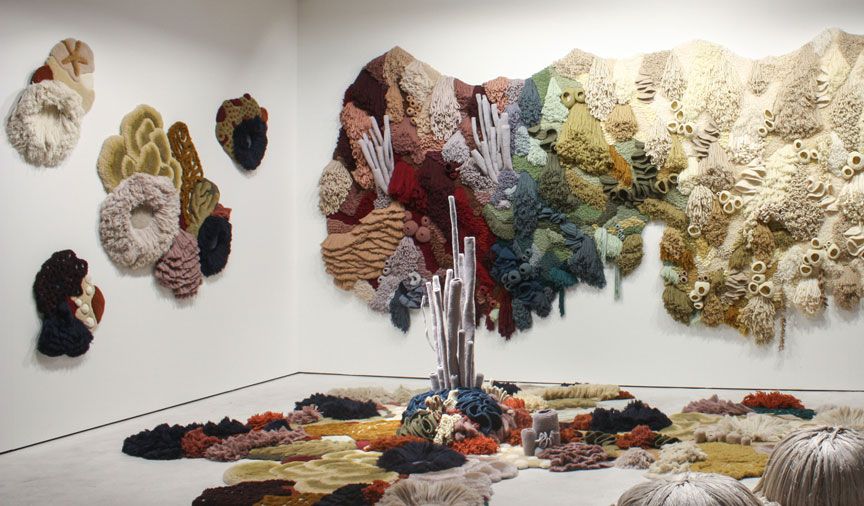
Your coral structures mimic lively and endangered coral reefs in the ocean. I have read that you grew up near the coast and that your many travels to the Caribbean have influenced your subject matter. Can you please elaborate on this and are there any other reasons why you are so drawn to coral reefs?
The ocean always inspired me a lot, maybe because I grew up in a coastal city where the ocean is very important. Tourism is one of the biggest contributors to the economic growth of the city, so we need to clean, maintain and protect the natural environment. I always traveled a lot to the Caribbean with my parents when I was very young, and I saw a different perspective of the sea—here in Portugal we do not have many corals—that remained in my mind. I started to reproduce these kinds of environments that were so inspiring at that moment. At the same time, I am very afraid of the bottom of the sea, and maybe this is one of the big aspects that inspires me so much.
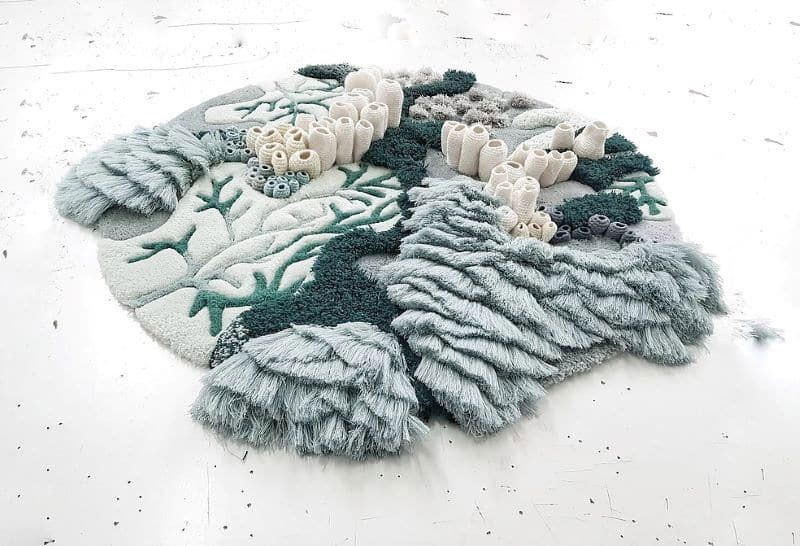
The mass textile industry is a significant source of global pollution for natural environments, particularly the ocean. You have highlighted this issue in your works by utilizing recycled and reused textile materials. How important are eco-conscious production methods to you?
I went to work in a textile factory in the north of Portugal so that I could understand how the textile industry works and the business around textiles, because I did not know anything about it at the time. When I went there, I realized how much discarded material they produce every day and to them these materials were unusable, but for a person like me, these were amazing materials! So we made a pact and they started giving me their discarded materials. Today, more factories contact me to use their discarded material and I always try to find ways to reuse them. Now, I also have fabrics as well that people give me. It is so interesting to have these materials and to try to find ways, with your creativity, to create something. I believe this is a solution for our planet and this is my mission—to show my audience the importance of recycling, and that sometimes we do not need to have money to create an idea in our minds. We just need solutions.
Your work raises awareness about the impact of human industries on water habitats and is hence in accordance with the United Nations Sustainable Development Goal of Life Below Water. Why do you think people should learn and care more about life below water?
Many people have never seen coral reefs, so they do not know what is happening. I have people arriving in my studio, asking why I add colours to my pieces, because they do not know that coral reefs are naturally colourful. They think that coral reefs are white, but the coral reefs are not white, they are white because they are dying. So, people do not know about the problem because they do not see it. However, it is not just life below water that we need to focus on. If you consider terrestrial habitats, many species, such as flowers, are threatened, and at the moment I am starting to explore what we can see in those environments that we are situated in. Many things are changing and we need to pay attention to our actions and what the consequences could be. So when we do something, we need to be cautious and think more about what effects it will have in the future. I think in that way, maybe we are more conscious and we can improve our daily life for the better and for the future for our kids. We cannot only think about the human species, because this planet is not only ours and this is a mentality that must be taught. I always try to advocate this message on my social media and through my art for people to think about when they are alone or when they see my work.
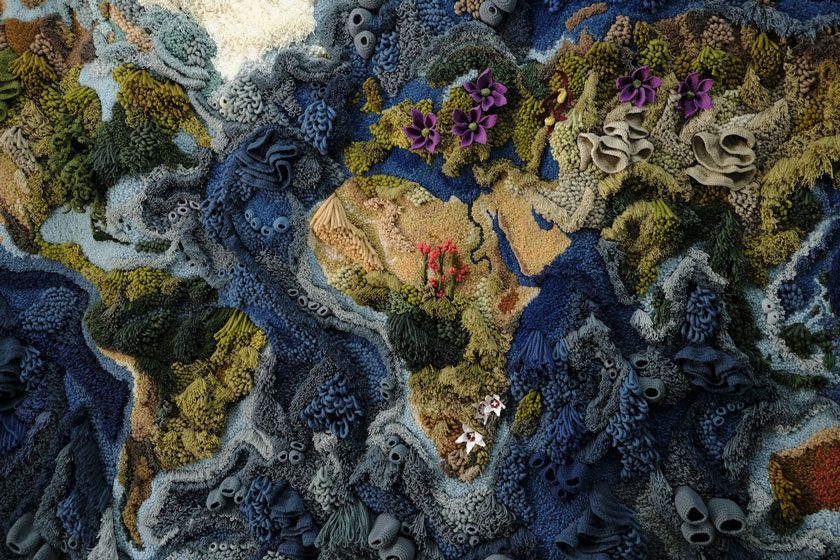
Textile art is becoming increasingly prominent in the contemporary art world. Are there any artists that inspire your work?
I have never felt inspired by looking at an artwork of another person and I usually do not look at what other artists are doing, because it cuts my creativity. When I need to be inspired, I really like to go into nature, I really like going to the beach and just being more connected to the environment. Good conversations with people that are creative as well, this inspires me a lot.
You use techniques such as crochet, latch hook, hand-tufting, embroidery, felting and macrame in your artisanal practice. Why did you decide to incorporate these elements of ancestry in the creation of your artworks?
I was always very interested in handcraft and natural processes, I do not know why, but I feel more comfortable with this. I am not only trying to help and inspire people through recycled materials, but also through my process and with the techniques that I use. I do not pollute through my process, so that kind of producing and creating helps the environment. Also, handcraft is tradition and we are losing this. Here in Portugal, almost anyone used to work with basketry techniques. However, the techniques that I use in textile are not used by many people anymore because it takes a lot of time.
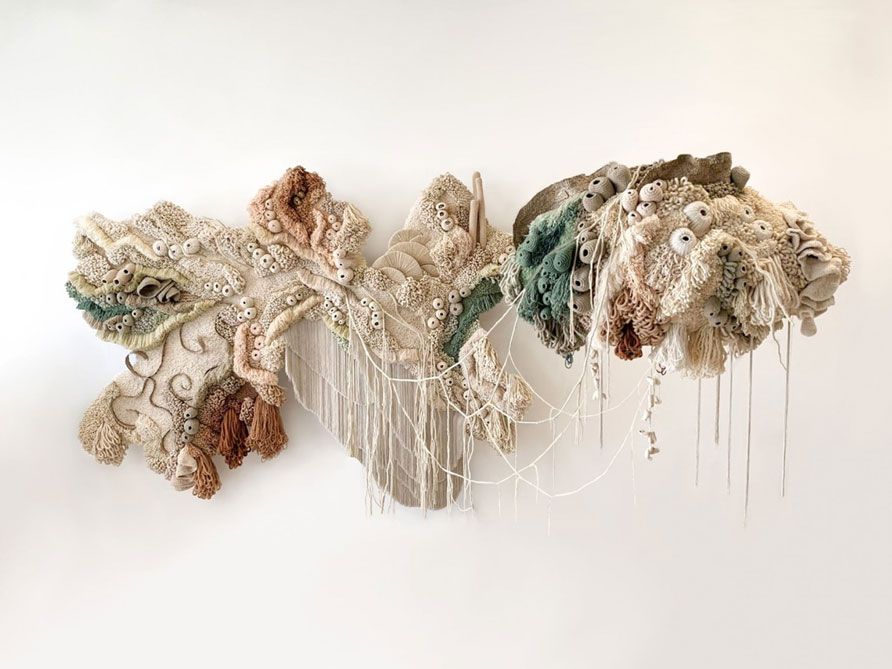
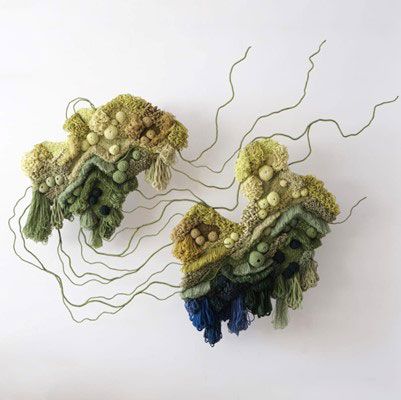
You received your Master’s degree at the Lisbon University in fashion and textiles design. May I ask what are your thoughts on the current gradual shift toward slow and sustainable fashion?
I studied fashion design and since I was very young, I liked to draw, knit materials and I always thought, maybe I want to be a fashion designer. When I started the course, I really enjoyed it but it was during my Master’s degree that I realized that this is not my type of work. I always preferred slow movement and my pieces are based on slow movement. However, in fashion, the process of working is too fast for me—you have one season to develop a collection and the next season needs to be a completely different collection and this is not sustainable and for me it does not make any sense. I love old things, collecting stuff from the garbage—I have always been like this. I like things with a story and maybe it is because of this, and when I started working in a factory during my Master’s degree I realized that my focus should not be fashion design but on textiles. So I started to produce my own yarns, using natural wool and getting into ecological dyes.
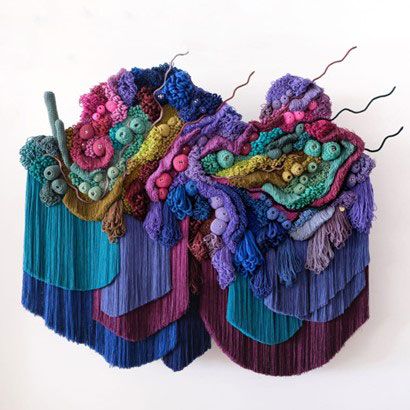
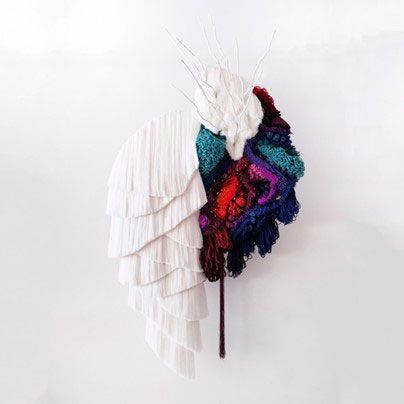
Do you consider yourself an environmental artist, and if so, do you believe that art can lead to social change?
Yes I think I am an environmental artist and this is the message I want to pass on when you look at my pieces, and this is what you see. I believe that with art we can arrive at more places, reach more people, because people can see it more easily as it is an attraction with the eyes. I also believe that the arts, with the help of governments, can be powerful and have a greater impact.
What can we expect from your next project?
I have this book by Ernst Haeckel. This artist has already died, but his work inspires me. He was an illustrator and a biologist and now I will create a collection, inspired by his work, and transport it for textiles to create something in 3D.
Cover image: Vanessa Barragão. Image courtesy of Where About Now.
See more works by Vanessa Barragão on ARTSY and learn more about endangered coral reefs and how you can help to save them here.
